
In January 2020 I started shopping for an electric car, buying a Chevy Bolt at the end of March. This post is a summary of what I’ve learned about charging the Bolt, both at home and on the road.
This is an evolving page about a rapidly evolving business. I’ll add more information as I learn it.
Continue reading Charging a 2020 Chevy Bolt Near Hillsboro Oregon →

Because of the economics of cuckoo clock repair, you can easily find old, dirty cuckoo clock movements on eBay for a fraction of what a new movement costs. These movements come with no documentation, so you get to work out which chains, weights, and bellows (cuckoo whistles) are right for them.
In this post I calculate the run time (1 day vs. 8 day) of a cuckoo movement I recently bought, and the Links Per Foot of the chain it uses. These two numbers tell me what parts to buy to make a clock case for this movement.
Continue reading Is That Cuckoo a 1-Day or an 8-Day Clock? →

In an earlier post I calculated the ideal pendulum period for the Korean clock by counting its wheels’ teeth (outer teeth) and pinions (inner teeth). This post is an update based on the errors I made while attempting to do the same for my second clock: the Ansonia kitchen clock.
What follows is a more detailed “how to” for calculating the pendulum period based on gear ratios.
Continue reading Calculating a Clock’s Ideal Pendulum Period, the Sequel →
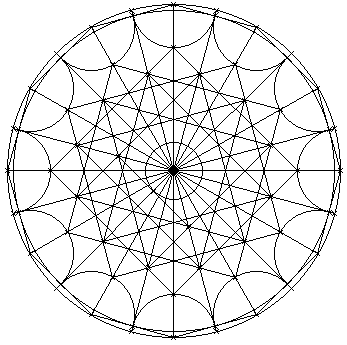
(first published on Needhamia.com in 2007)
I find the rose windows of Gothic cathedrals awe-inspiring. From the rigid formalism of Chartres to the flamboyant explosion of Tours, their marriage of geometry, philosophy, and aesthetics with stone and glass is awesome. Built at a time when science and spirit weren’t as divided as today, each window is a statement of the beauty, order, and harmony in the world. Using only a pair of compasses (dividers) and a straight-edge (an unmarked ruler), the Gothic architects created myriad lace-like designs, making stone hang in the air and glass sing.
Continue reading Geometry, Gothic Architecture, Rose Windows, and Christmas Ornaments →
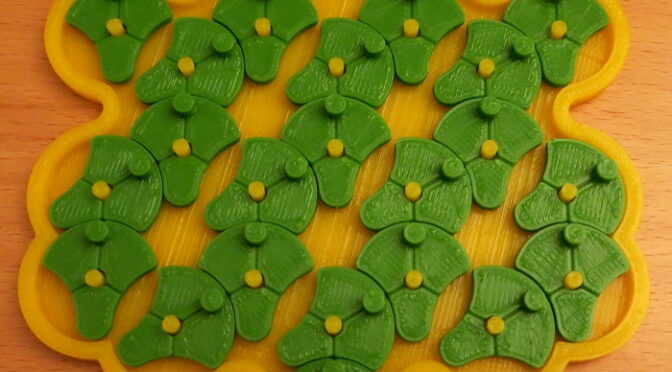
25 Lotus Flowers is a rotating-piece puzzle I recently invented (at least I’m ignorant of any earlier versions). The object is to turn the 25 lotus Flowers to form a given pattern. The challenge is that each Flower prevents one of its neighbors from turning, so you usually have to turn several Flowers before you can turn the one you want to turn.
I called the puzzle 25 Lotus Flowers because the 25 puzzle pieces look to me like ancient Egyptian images of lotus flowers, and the addictive nature of the puzzle reminds me of the Lotus Eaters in The Odyssey.
Continue reading How To Play 25 Lotus Flowers →
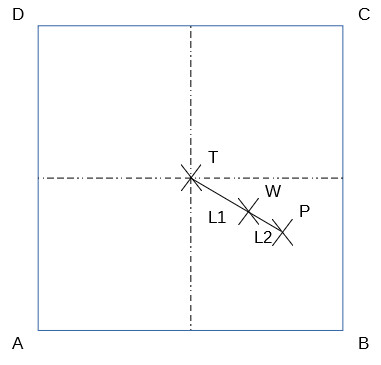
In my previous post I found the center of gravity of the top plywood circle of the Dog Bed Weight Scale. This post goes through the math of calculating the weight W on the scale and the position {X, Y} of that weight’s center of gravity. That is, how much does our dog PIppa weigh when resting on the bed, and what is her position on the bed?
Continue reading Dog Weight Scale Part 6: Calculating the Dog’s Weight and Position →

In my previous post I described how to calibrate a load sensor. This post shows how to measure center of gravity, and shows a failed attempt to mount the load sensors to the scale.
Now that I’m using 4 load cell amplifiers rather than 1, I can calibrate each load sensor separately. This in turn will let the Arduino calculate Pippa’s real weight accurately regardless of what part of her bed/scale she’s lying on.
Continue reading Dog Weight Scale Part 5: Center of Gravity and a Mounting Fail →
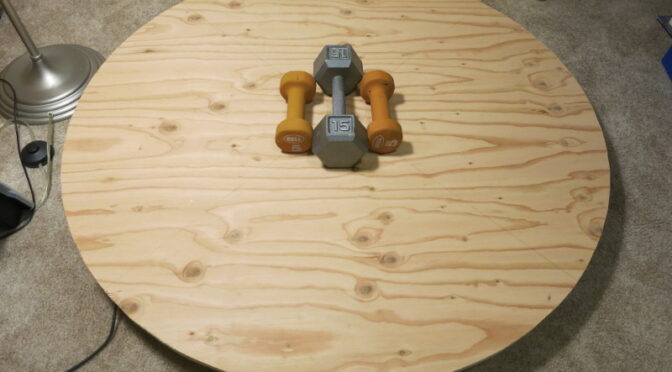
In my previous post I finished assembling the Dog Bed Weight Scale, at least enough to allow testing it. In this post, I relate how I calibrated and tested it.
Using the Bogde HX711 Load Cell Amplifier library and examples, and the Sparkfun HX711 Example Arduino Sketches, I quickly wrote a little Sketch to output the raw value from the scale (SCALE = 1.0 and OFFSET = 0L). The library made talking to the HX711 trivial.
Continue reading Dog Weight Scale Part 4: Calibration and its Difficulties →
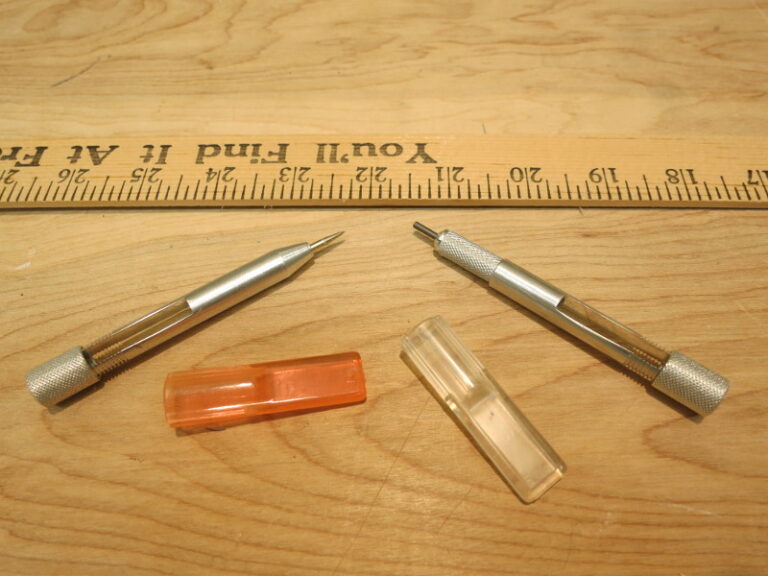
I want to learn how to use Load Sensors to continuously weigh stuff with an Arduino, so I thought it would be fun to continuously weigh our dog, Pippa, while she sleeps in her bed each night. The project is a little like Nate Seidle’s Beehive scale, but simpler.
The idea is to turn Pippa’s bed into a scale. Pippa’s in fine shape right now, but it’s always good to keep an eye on your dog’s weight, and a custom-made scale is a great way to do it.
Continue reading Dog Weight Scale, Part 1: Cutting the Circular Base →
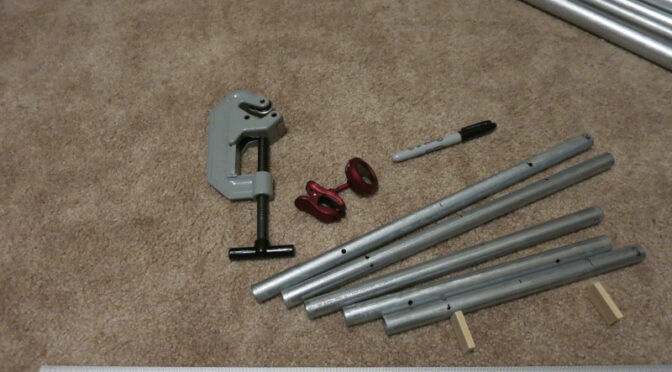
After a few weeks of experimentation, I think I can now write sensible notes on how to cut and tune the chimes for a glockenspiel (metal xylophone) out of metal conduit. This is the first step of my Robotic Glockenspiel project, which I hope to end with a network-connected, Arduino-controlled set of chimes that can play Christmas carols.
Continue reading Cutting and Tuning Robotic Glockenspiel Chimes →
Technical Writing and Self-Pubilshing










